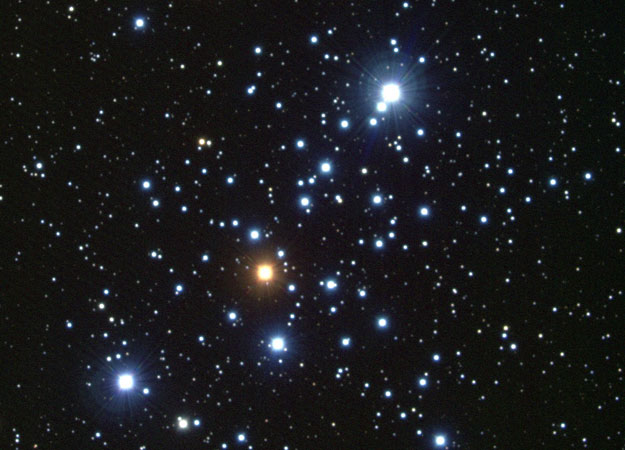Explanation: Bright blue stars highlight the open cluster known as M103. The gas clouds from which these stars condensed has long dispersed. Of the stars that were formed, the brightest, bluest, and most massive have already used up their nuclear fuel and self-destructed in supernova explosions. A 20 million-year age for M103 was estimated by finding the brightest main-sequence stars that still survive and theoretically computing their lifetimes. In fact, a formerly blue star has recently evolved off the main sequence and is visible above as the red giant star near the cluster center. In general, yellow stars like our Sun are usually less bright and hence less prominent in open clusters than their massive blue cousins. Light takes about 14 light-years to cross M103. Although visible with binoculars toward the constellation of Cassiopeia, M103's great distance of 8000 light years makes it appear four times smaller than a full moon.
1999 2000 2001 2002 2003 2004 2005 2006 2007 2008 2009 2010 2011 2012 2013 2014 2015 2016 2017 2018 2019 2020 2021 2022 2023 2024 2025 |
Yanvar' Fevral' Mart Aprel' Mai Iyun' Iyul' Avgust Sentyabr' Oktyabr' Noyabr' Dekabr' |
NASA Web Site Statements, Warnings, and Disclaimers
NASA Official: Jay Norris. Specific rights apply.
A service of: LHEA at NASA / GSFC
& Michigan Tech. U.
|
Publikacii s klyuchevymi slovami:
open cluster - M 103 - Rasseyannoe skoplenie
Publikacii so slovami: open cluster - M 103 - Rasseyannoe skoplenie | |
Sm. takzhe:
Vse publikacii na tu zhe temu >> | |
